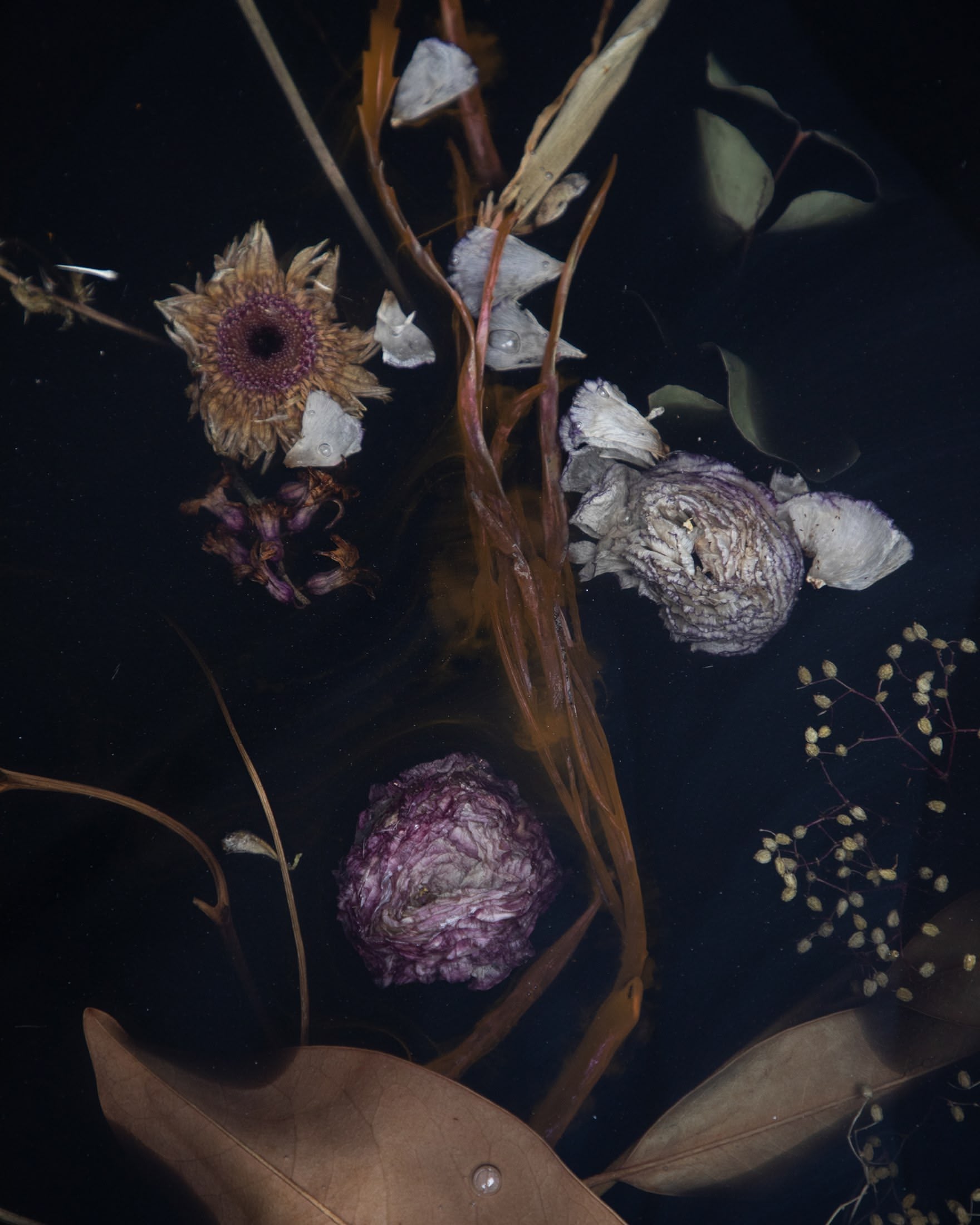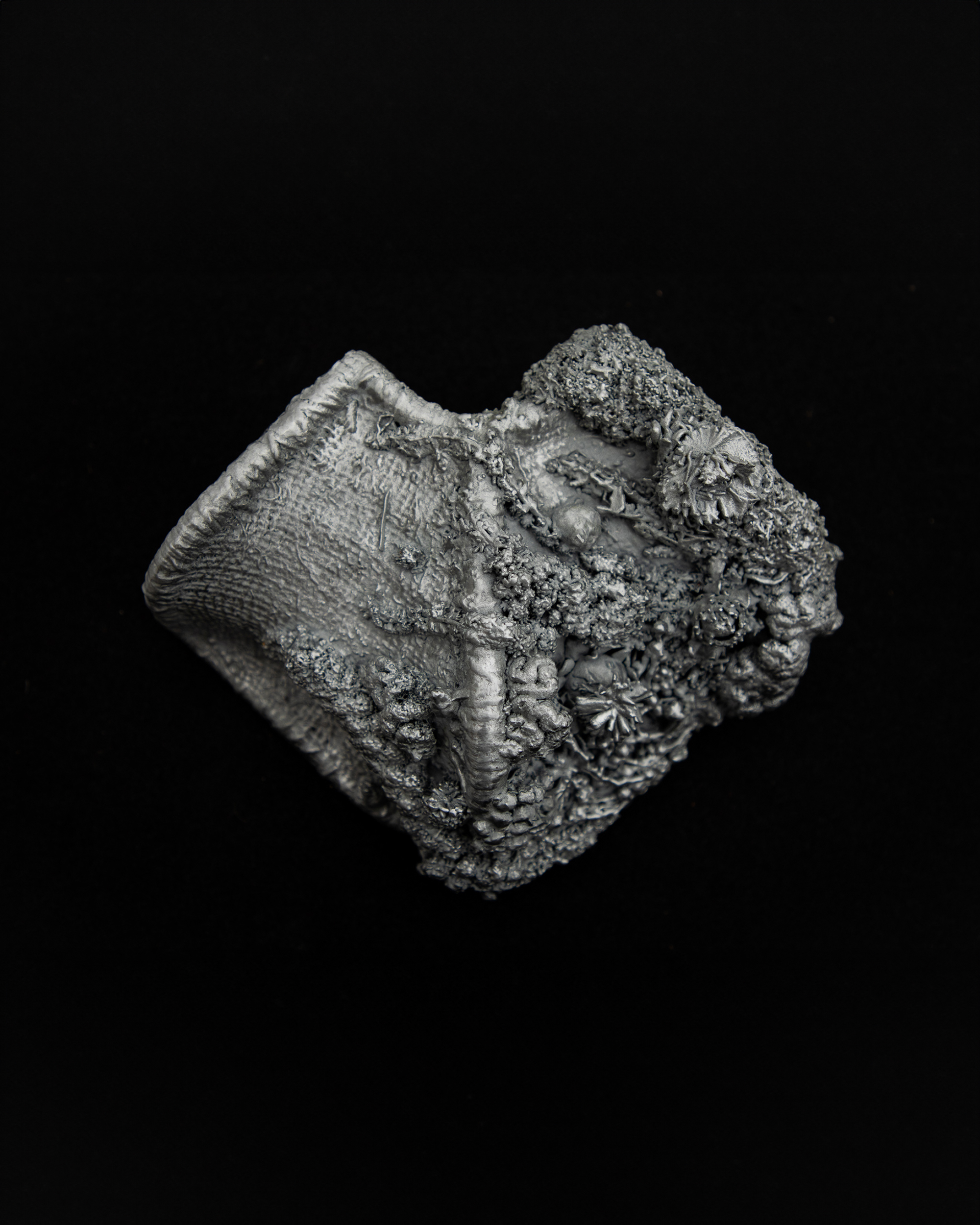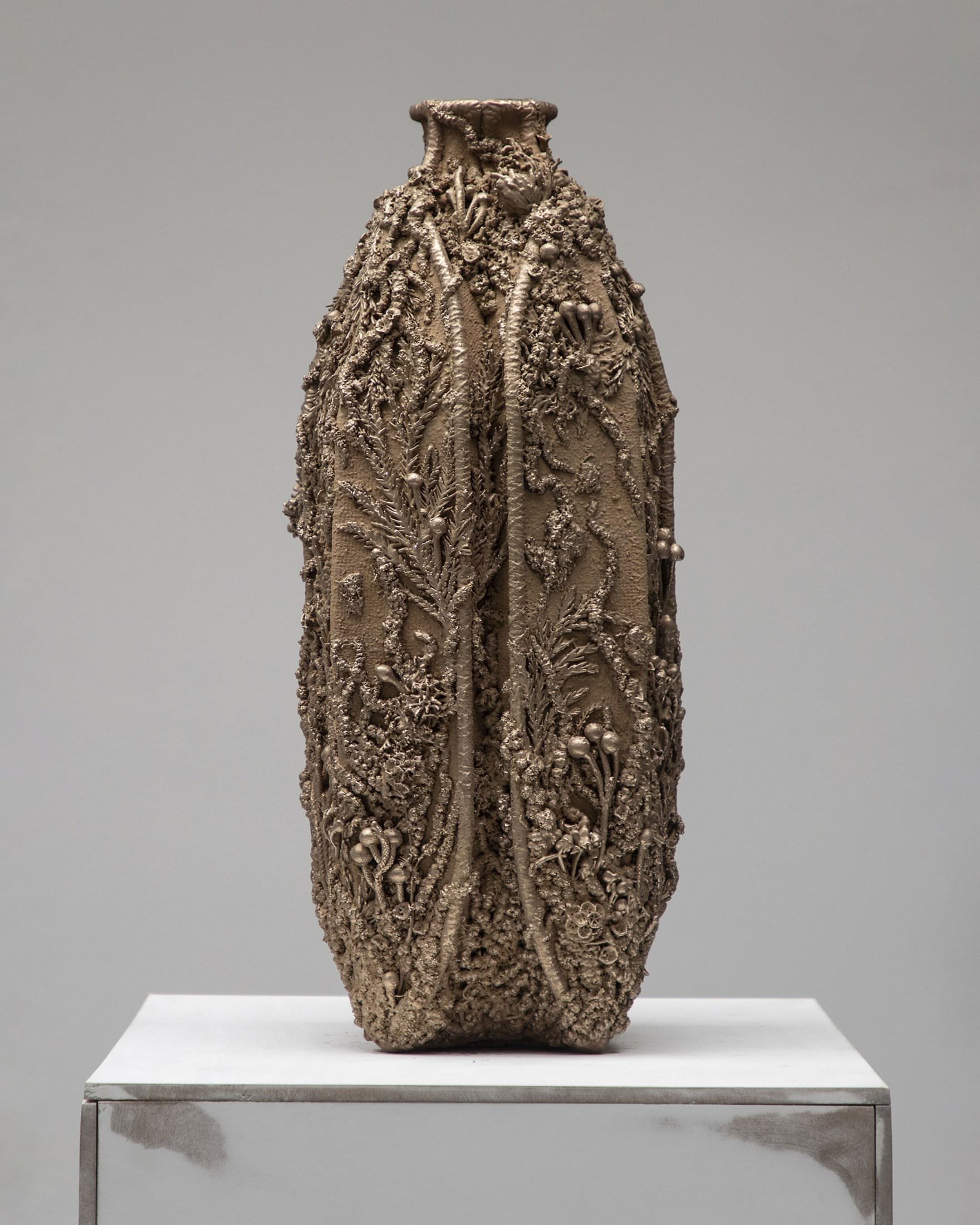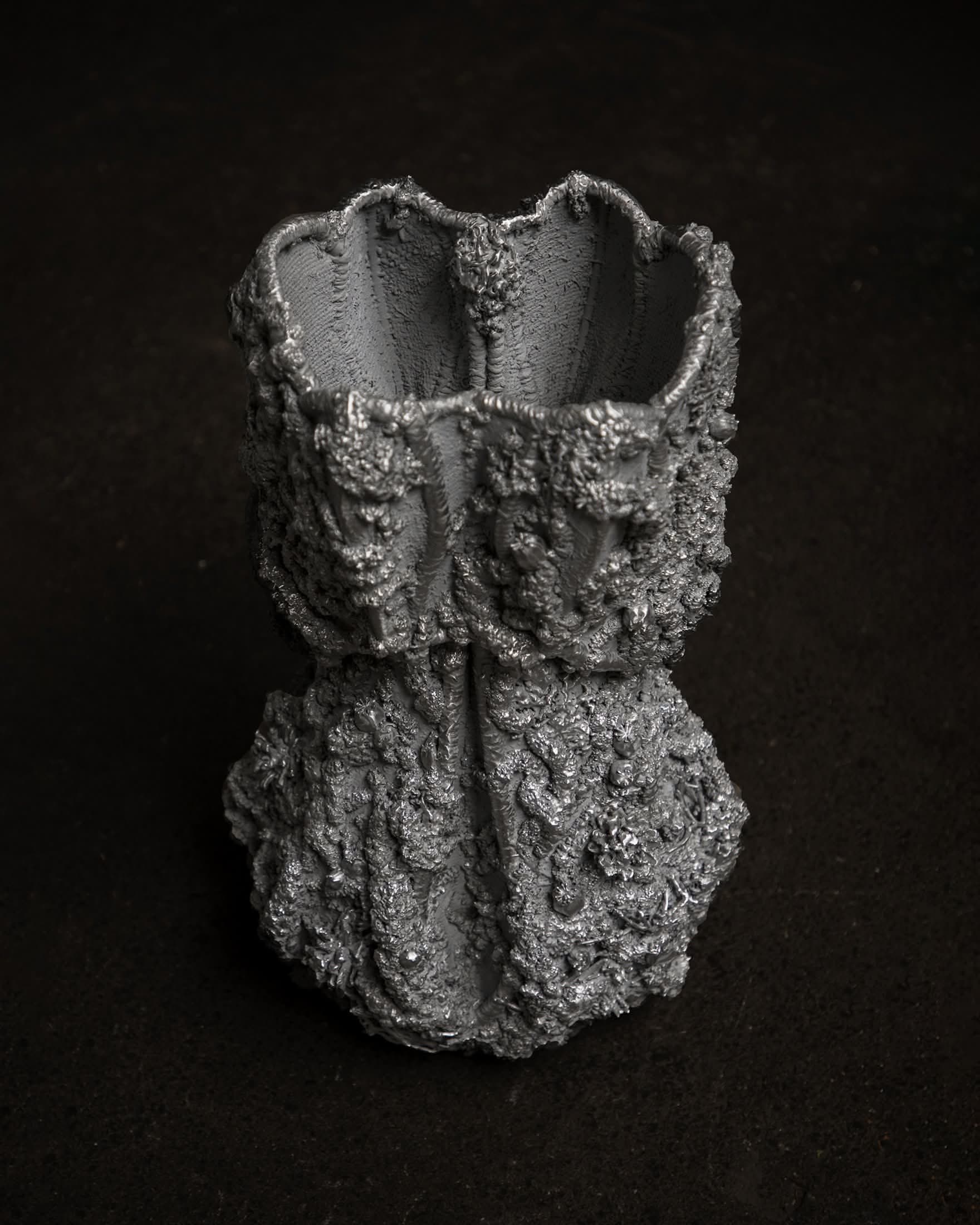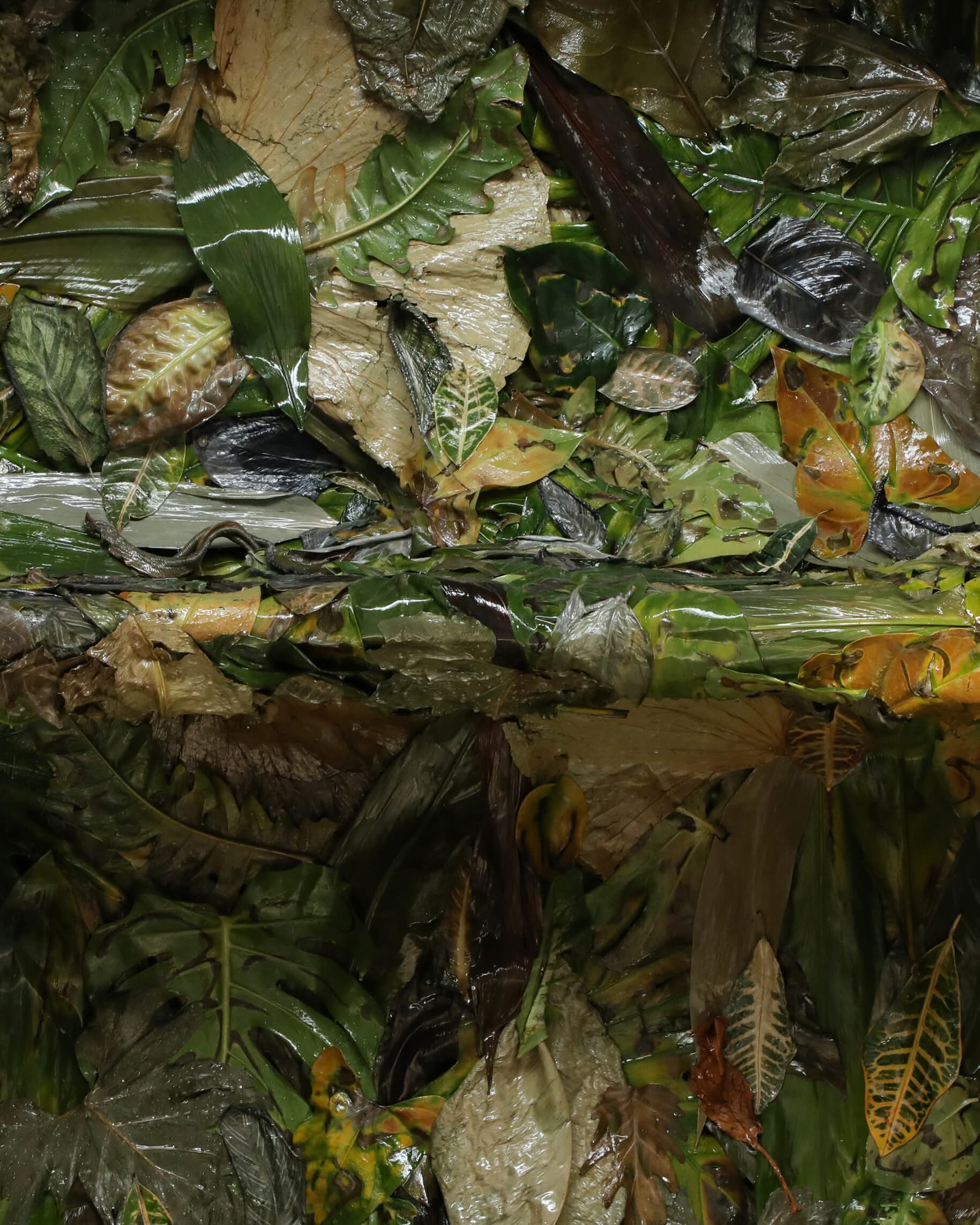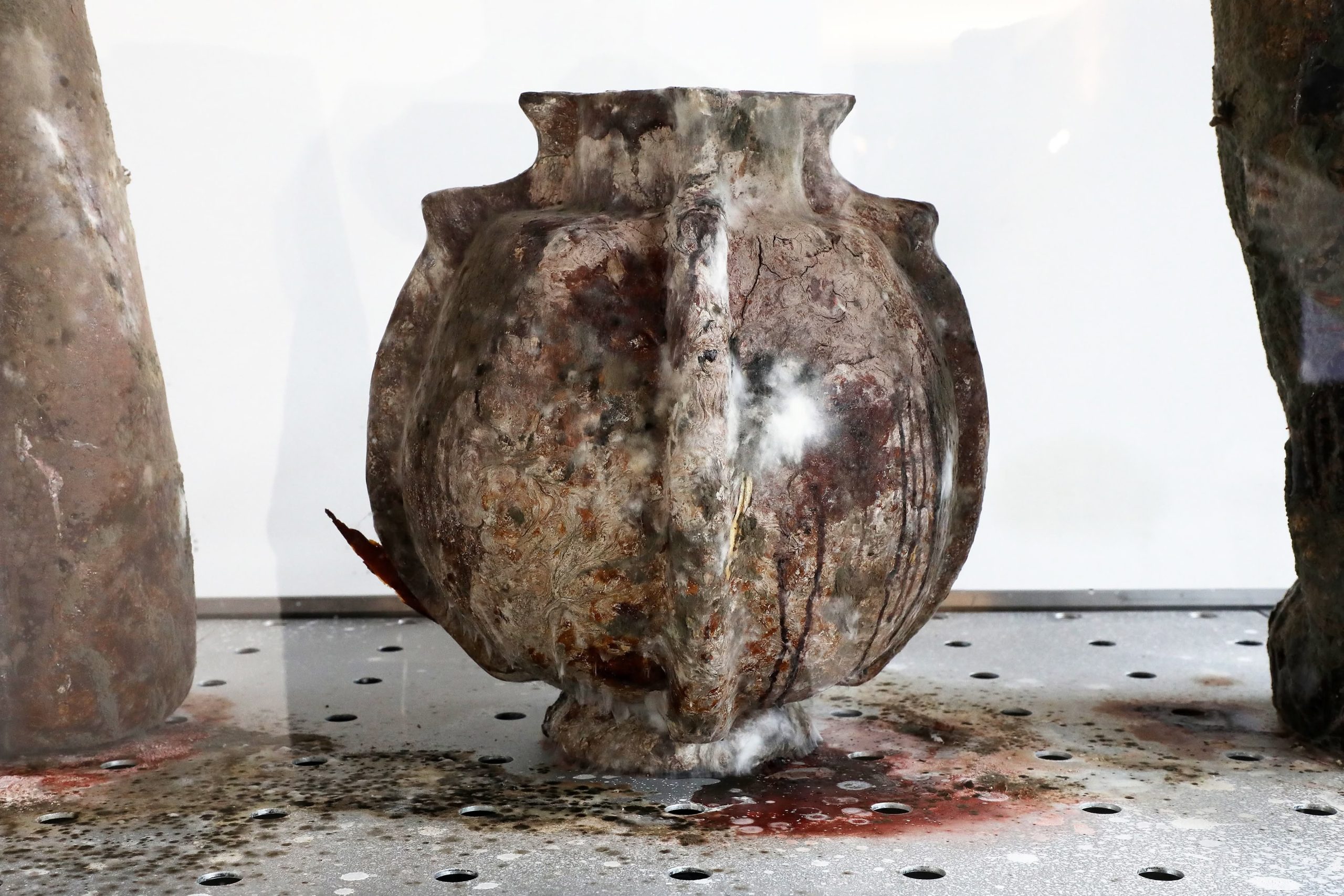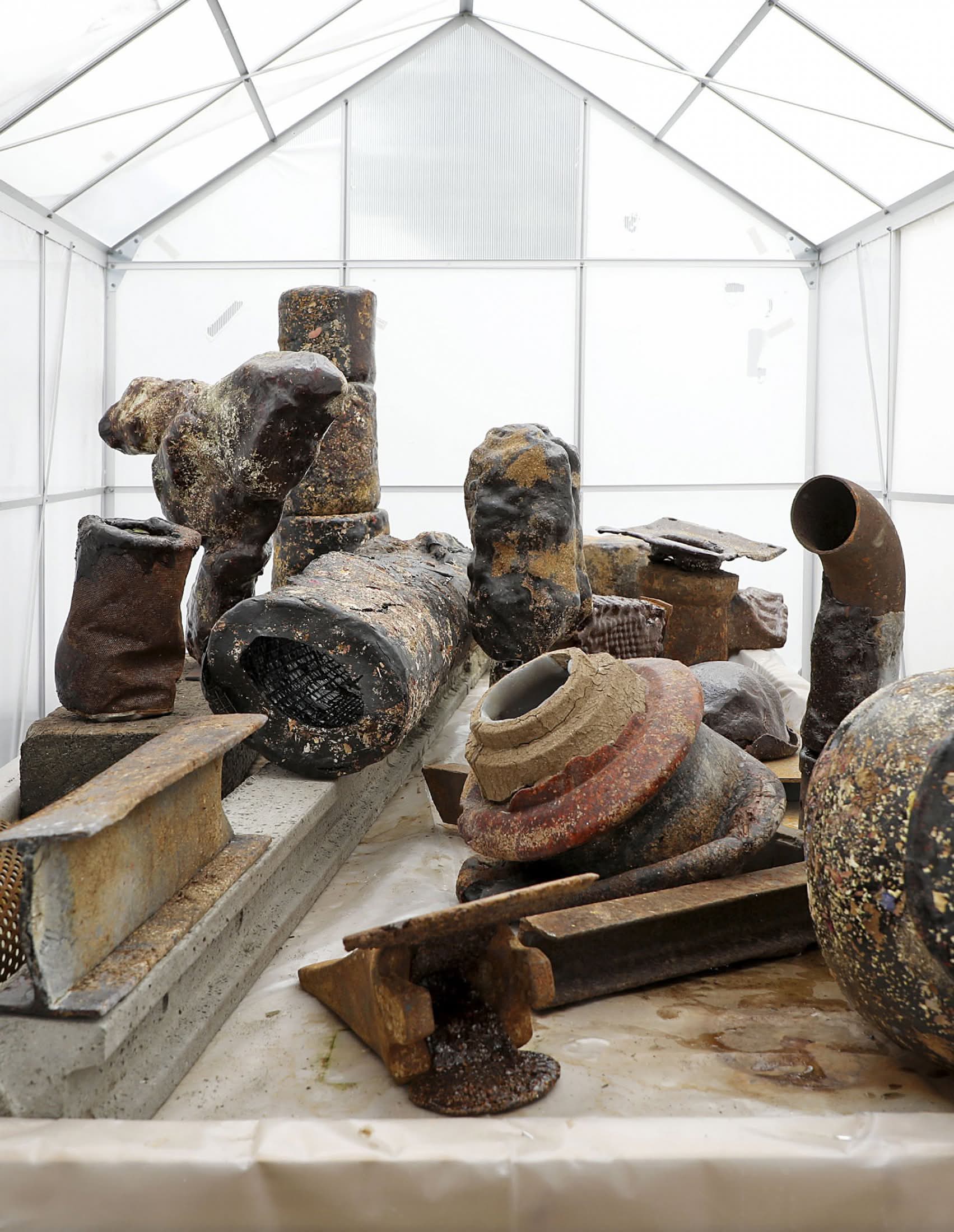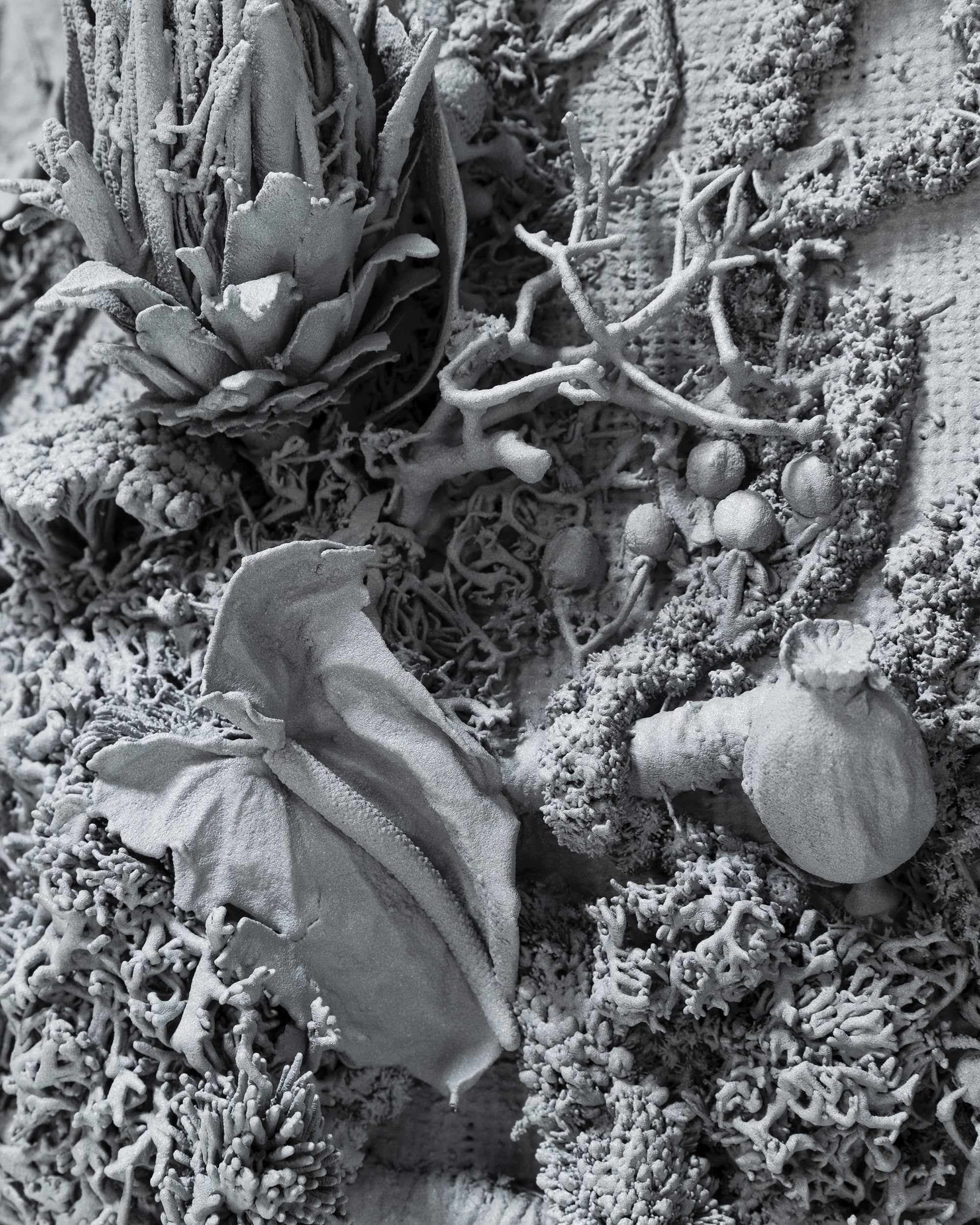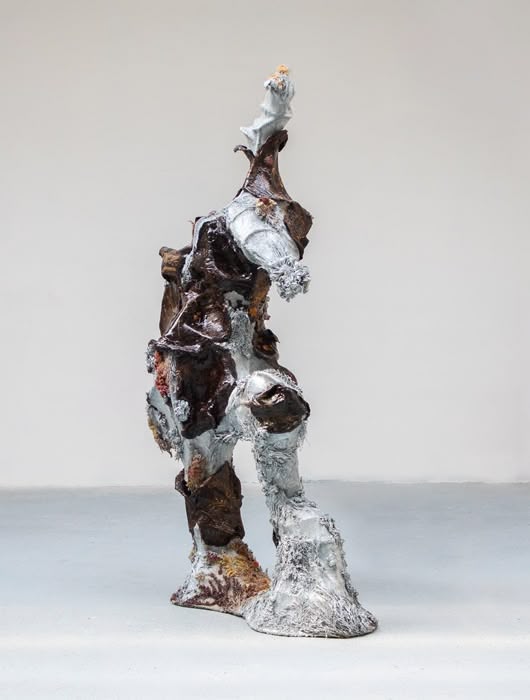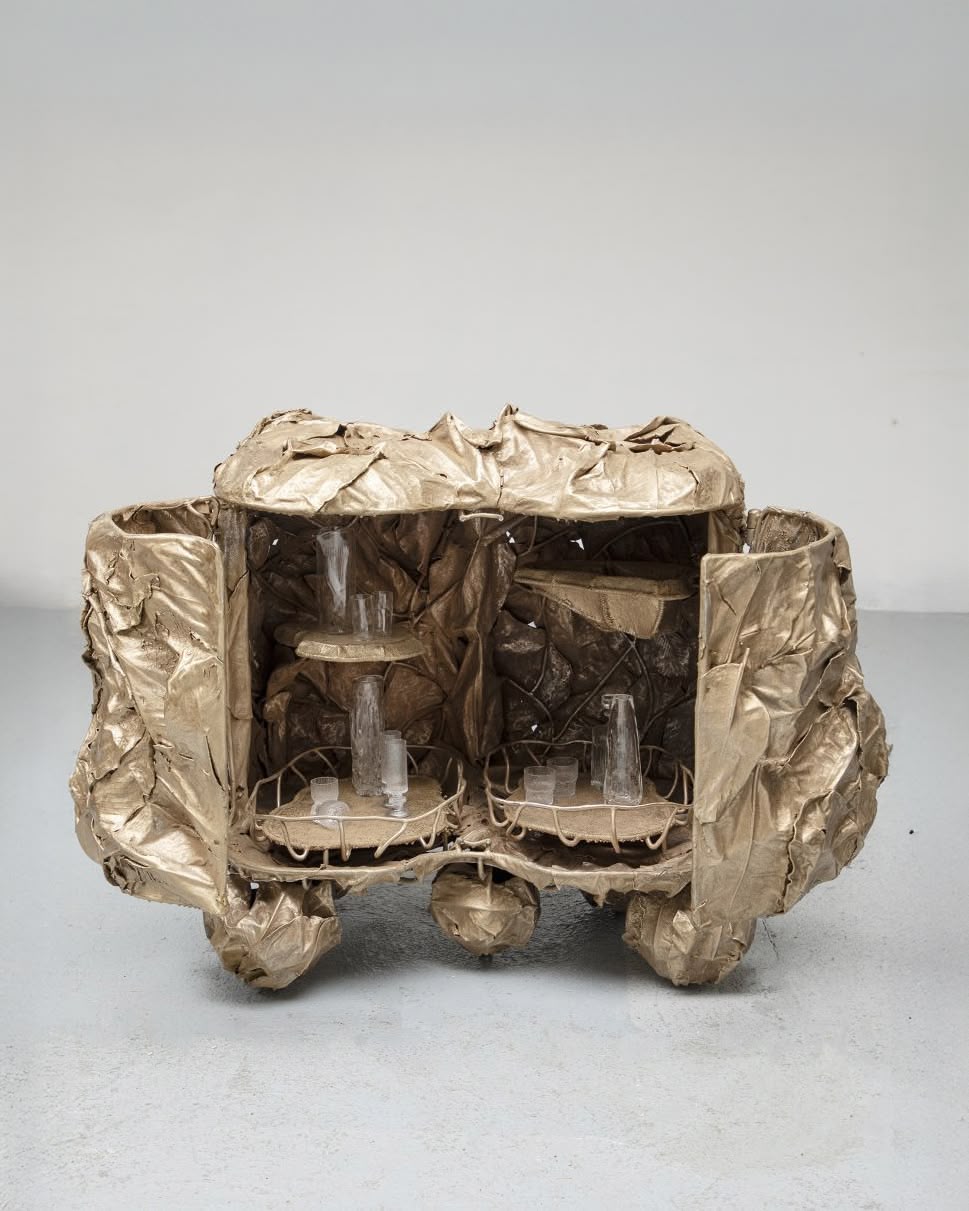
About
On this page
Artist
From ideation to implementation, we have full personal control over the creative process, adopting custom-developed methodologies for each new project. Our “Unnatural Practice” embraces independent research in the fields of contemporary visual arts and design as well as industrial production, manual crafts and engineering. Sourcing from various disciplines, we are driven to constantly reinvent our processes and find their implementation in new materials, commentary works and exhibition concepts that offer an altered perspective on the reality around us. Our vast material library – a Living Archive – is built around organic (degradable) and synthetic (durable) matter, including floral waste sourced from an extended network of dedicated collaborators and supporters.
Resulting from experimental, time- and labour-intense processes that range from applying meticulous handicrafts to reinventing and adapting industrial methods for small-scale production, our pieces are usually one-off, conceptual prototypes and unique collectable items that aspire to redefine historical references and provide a new perception of the world through an expression of their own. Over the course of years, we have researched and developed a number of unique materials and in-house techniques that formed the basis of our signature collections. Inspired by endless examples of botanical ornamentation found throughout history, we have treated flowers not as mere decoration, but as the very fabric and inspiration for the functioning of our materials. From observing the slow decay to preserving them in resin or metal, we make use of flowers that are „unsellable” due to their condition, withering and fading, and thus reveal their subtle beauty and transformative potential. Upcycling them into new pieces not only brings a new aesthetic and emotional merit, but also helps us educate our audience about the values we believe in.
Highlighting the natural qualities of the materials, we emphasise the fact that our pieces are living objects that transform over time. We find value in the imperfections of the fading plants, and encourage others to recognise beauty in transition and flux. Embracing the visual changes within, we strive to raise awareness of and engagement in the almost imperceptible evolution of natural processes. The patina and the discolouration that inevitably happen with time become a valuable part of the piece, and not a defect. Rather than denying the flow of time, we make the inevitable – expected, visible and wanted. The aesthetic merits of our works are balanced by the need to come up with the most sustainable, economical solutions, optimising the production process to minimise waste and reduce the carbon footprint emitted during production and transportation. We always try to make objects that can be taken apart, repaired and restored if needed, so that generations can enjoy them.
2025 Vas Florum: Resina Botanica, Carpenters Workshop Gallery. London, UK.
2025 Ghost Orchid, Alcova. Milan, Italy.
2024 Vas Florum: Resina Botanica, Carpenters Workshop Gallery. New York City, USA.
2023 Vas Florum, Carpenters Workshop Gallery. Paris, France.
2022 Flora Contemporaria. Twenty First Gallery. New York City, USA.
2022 DNA of Things, Palaca Cukrarna – BIO27 Satellite Programme. Ljubljana, Slovenia.
2021 Flora Contemporaria, Twenty First Gallery. Design Miami, USA.
2021 Unnatural Practice, Ordet. Milan, Italy.
2020 Encoded Symbols: Protoplasting Nature, Carwan Gallery. Athens, Greece.
2019 White Perma, with Sarah Myerscough Gallery. Design Miami, USA.
2018 Nature of Things II: Horta Museum. Brussels, Belgium.
2017 Flora Noir: Twenty First Gallery. New York, USA.
2015 Inflorescence and Other Artefacts: Contemporary Applied Arts. London, UK.
Selected Group Shows
2025 Re_Crafting Tomorrow, Cheongju Craft Biennale. Cheongju, Korea.
2025 Romantic Brutalism. A Journey Into Polish Craft and Design, Visteria Foundation. Milan, Italy.
2025 Cruise 25, Carpenters Workshop Gallery. Paris, France.
2024 Double Agent. BIO28 – International Design Biennale. Ljubljana, Slovenia.
2024 Designblok, Museum of Decorative Arts. Prague, Czech Republic.
2024 Homo Faber Biennale, Fondazione Giorgio Cini. Venice, Italy.
2024 Genius Loci, Maison Bernard. Théoule-sur-mer, France.
2024 Design Sediments, Huidenclub. Rotterdam, The Netherlands.
2023 The Banquet of Wonders: Delighting in the world, Château Perrier, Épernay, France.
2023 Material Beings. London Craft Week, Cromwell Place, London, UK.
2023 Plant Fever. Towards a Phyto-Centered Design, Schloss Pillnitz, Wasserpalais. Staatliche Kunstsammlungen Dresden, Germany.
2023 Material Beings, London Craft Week, Cromwell Place, London, UK.
2022 Creative Nature, Grande Halle, Anciens Abbatoirs. Mons, Belgium.
2022 Ferragus. Retti Candle Store. Vienna, Austria.
2022 Design Miami, Twenty First Gallery, Miami, USA.
2022 NEXTGEN | The New Guard: Paris. Carpenters Workshop Gallery. Paris. France.
2022 Beyond Nature, MAKE Hauser & Wirth. London. UK.
2022 Homo Faber, Fondazione Giorgio Cini. Venice. Italy.
2022 FOG Art Fair, Sarah Myerscough Gallery. San Francisco. USA.
2021 Young Poland, William Morris Gallery. London. UK.
2021 Wilder Than Wildness Itself, MAKE Hauser & Wirth Somerset. Bruton. UK.
2021 Plant Fever, Museum für Gestaltung. Zürich. Switzerland.
2021 Doppia Firma: Il Giardino Talentuoso, Palazzo Morando. Milan. Italy.
2020 Plant Fever, CID au Grand-Hornu. Belgium.
2019 Collect, Sarah Myerscough Gallery. London. UK.
2019 Beazley Designs of the Year 2019, The Design Museum. London. UK.
2019 The Chair, The Future Perfect. New York, USA.
2019 FOG Art Fair, Sarah Myerscough Gallery. San Francisco, USA.
2018 Time Within Time: Verbeke Foundation. Kemzeke, Belgium.
2018 FOG Art Fair, Sarah Myerscough Gallery. San Francisco, USA.
2018 Design Miami, Sarah Myerscough Gallery. Miami, USA.
2018 The Salon Art + Design: Sarah Myerscough Gallery. New York, USA.
2018 Art House, Designblok, Prague, Czech Repubilc.
2018 Decorex Future Heritage. London. UK.
2018 Botanic Psyche duo show with Marlene Huissoud: Spazio Nobile Gallery, Brussels, Belgium.
2017 Hokuriku Kogei: “WORLDS KOGEI 100”: Toyama Museum of Art and Design, Toyama, Japan.
2017 Jerwood Makers: Jerwood Visual Arts, London, UK.
2017 Rising Talents Award: Maison & Objet, Paris, France.
2016 Design Miami Basel: Nature Lab. Miami, USA.
2016 handiCRAFT: Traditional Skills in the Digital Age, MAK Vienna, Austria.
2016 London Design Festival: British Craft Pavilion. London, UK.
2016 Breathless, London Design Festival. London, UK.
2016 Design Miami Basel: Nature Lab. Basel, Switzerland.
2016 Design Days Dubai: Crafts Council. Dubai, UAE.
2015 What Is Luxury?: V&A, London, UK.
2015 Ready, Made, Go: ACE Hotel Shoreditch, London, UK.
2015 Future Heritage: Decorex. London, UK.
2015 Biennale internationale Design. Saint-Étienne, France.
2015 Concerning Plants: Select Festival, London, UK.
2023 AD 100, Architectural Digest Magazine
2022 EDIDA Young Design Talent of the Year, Elle Déco International Design Awards. Milan, Italy.
2022 AD 100, Architectural Digest Magazine
2021 AD 100, Architectural Digest Magazine
2019 Beazley Designs of the Year: Shortlisted. London, UK.
2018 Mazda Design Award. Warsaw, Poland.
2017 The U-50 International Hokuriku Kogei Awards, Excellence Award, Toyama, Japan.
2017 Maison & Objet Rising Talent Awards. Paris, France.
2017 The Arts Foundation Award: Shortlisted. London, UK.
2016 The Architecture Digest Design Award. Berlin, Germany.
2016 Hospital Club 100 Award: Nomination. London, UK.
2016 Wallpaper Design Award 2016. London, UK.
2015 Perrier-Jouët Arts Salon Prize 2015. London, UK
2015 Research In Making Award: Decorex. London, UK.
2015 Decorex Future Heritage Foundation. London, UK.
2014 Brilliant – Eddie Mundy award – nomination. London, UK.
2014 Moving Minds: Sustain RCA Award. London, UK.
2025 Design Salon, talk. Seoul, Korea.
2024 Shakti Design Residency, jury member. New Dehli, Jaipur, India.
2024 Vogue Business Fashion Environment Summit, talk. Warsaw, Poland.
2022 DieDAS. Design Akademie Saaleck, talk. Naumburg, Germany.
2022 Acidic Waters: Institute for Postnatural Studies, talk. Madrid, Spain (online).
2019 Unnatural Processes – Domaine de Boisbuchet, workshop. Lessac, France.
2019 Unnatural Processes – Designtransfer, UDK, talk. Berlin, Germany.
2019 Residency #1: Encoded Symbols, IN Residence Design, Turin, Italy.
2018 Precious and Inspiring Design Pieces from Simple Material, Maison&Objet, talk. Paris, France.
2018 Unnatural Processes – Brussels Design September, talk. Brussels, Belgium.
2018 Unnatural Processes – Łódź Design Festival, talk. Łódź, Poland.
2016 Luxury? Frankly, I Don’t give a damn: Ravensbourne University, talk. London, UK.
2016 The Making Process – The American University, talk. 2016. Dubai, United Arab Emirates.
2015 Creating Narratives: University of Gothenburg, talk. Gothenburg, Sweden.
Process
Understanding the Aura of an object. 2014






















